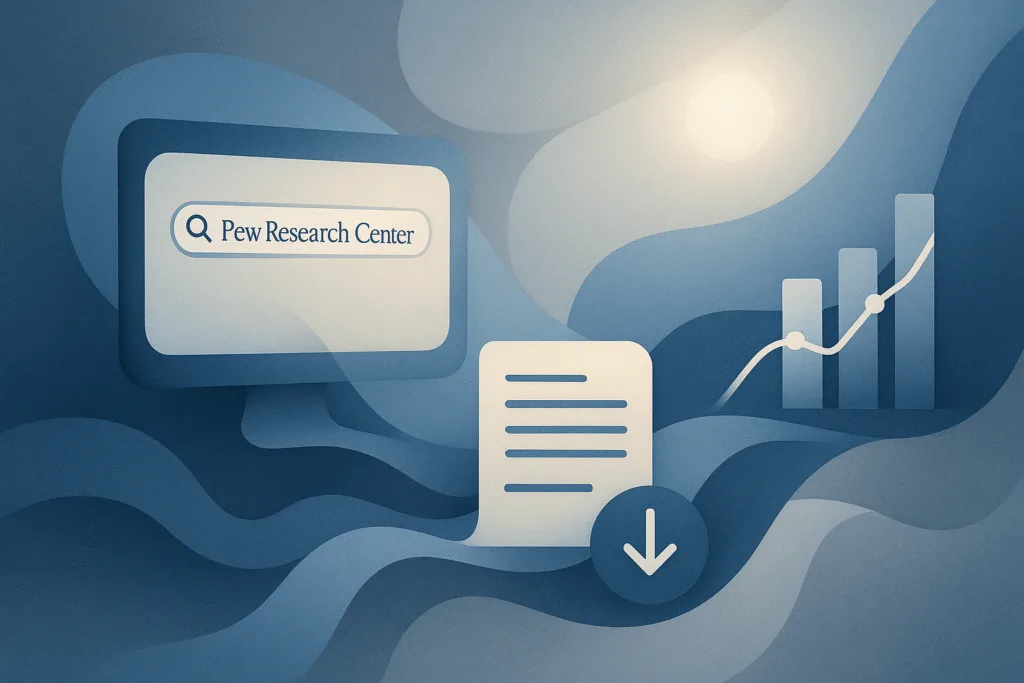
Pew Research Center offers a vast trove of public data, survey results, and detailed reports that can power academic projects, journalism, business strategies, and policy-making. Knowing how to find, download, and properly use Pew’s data helps ensure your own work is grounded in credible, unbiased evidence. In this guide, you’ll learn the step-by-step process for accessing Pew’s resources and how to integrate their data responsibly into your research or reporting. Pew’s clear access policies and robust citation guidelines make this process accessible to everyone—from students to professionals.

1. Visit the Pew Research Center’s Official Website
Begin by heading to the Pew Research Center’s official website. The homepage features links to the latest reports, topic-specific research, and easy navigation menus. From here, you can access the “Methods” and “Data” sections for direct entry points to raw datasets and published findings. Bookmarking this homepage provides a reliable starting point for all future data searches.
2. Navigate to the Data & Methods Page
To access downloadable data, visit the Data & Methods section. This dedicated page houses the full list of publicly available datasets, including survey microdata, questionnaires, and methodology reports. Datasets are organized by topic, date, and project, making it easy to locate relevant files for your needs. Each entry typically includes a brief overview, documentation, and clear usage guidelines.
3. Download Datasets and Reports
Once you find the desired dataset or report, follow the download links provided on each project page. Files are usually available in common formats such as CSV, Excel, or PDF. Many datasets are accompanied by detailed methodological notes and codebooks, which explain variable definitions, sampling techniques, and data collection procedures. This additional documentation ensures that users understand the context and limitations of the data before applying it in their own work.
4. Review Terms of Use and Citation Requirements
Pew Research Center makes most of its datasets freely available for academic, journalistic, or personal use. However, users must review and follow Pew’s terms of use to ensure ethical and legal compliance. Each dataset includes recommended citation formats, helping you credit Pew’s work accurately in publications, presentations, or reports. This maintains transparency and upholds research integrity in your field.
5. Integrate Data Responsibly into Your Projects
After downloading the data, use the accompanying codebooks and documentation to analyze and interpret the information correctly. Whether you are creating visualizations, writing policy briefs, or conducting academic research, always attribute data sources as specified. For journalists and students, including Pew’s citation information strengthens your credibility and allows audiences to verify findings. Pew’s straightforward guidelines make responsible data integration accessible, regardless of your technical expertise.
6. Get Support and Stay Updated
If you need assistance with data interpretation or technical questions, Pew Research Center offers contact information and FAQ resources on their site. Additionally, subscribing to Pew’s newsletters ensures you receive updates on new datasets, reports, and analysis tools as they are released. Staying engaged with Pew’s ongoing work allows you to incorporate the latest findings into your own research or coverage.
Start Using Pew Research Center Data with Confidence
Explore the official Pew Research Center data portal, download the most relevant reports or datasets for your work, and follow best practices for ethical citation and use. Consider subscribing to their newsletters to remain up-to-date with new releases and methodological updates.
Take the next step by integrating high-quality, nonpartisan data from Pew Research Center into your own projects, policy work, or classroom. Empower your work with trusted insights today.
Special Offer: Get Direct Access to Pew Research Center’s Open-Source Tools
Unlock advanced data analysis and automation by exploring Pew Research Center’s official GitHub repository. Here you’ll find open-source R and Python packages, custom survey analysis tools, codebooks, and sample code used in published studies. These resources allow you to replicate Pew’s methodologies, create your own visualizations, or integrate high-quality data workflows into your research or organization—no extra steps required.